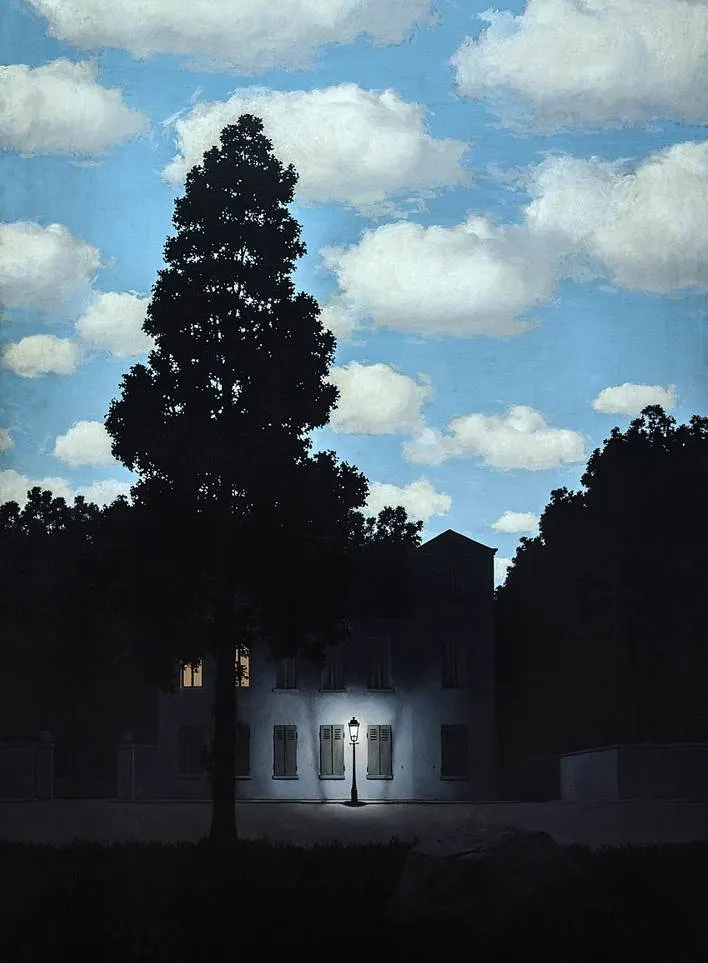If you want to admire art ranging from Impressionist masterpieces to contemporary paintings, then this popular museum in New York City is a great place to visit.
The Solomon R. Guggenheim Museum is commonly referred to as “The Guggenheim” and is located at 1071 Fifth Avenue in the Upper East Side of Manhattan.
The museum was established by the Solomon R. Guggenheim Foundation in 1939 as the “Museum of Non-Objective Painting.”
It started with several collections, including that of Solomon Robert Guggenheim (1861-1949), a rich American businessman who was a member of a wealthy mining family.
Although he started collecting paintings by the Old Masters in the 1890s, his taste switched to modern art in the 20th century.
Today, the museum is housed in a landmark building in New York City designed by the renowned architect Frank Lloyd Wright.
The building features a distinctive 6-story gallery that was completed in 1959. This building has become a UNESCO World Heritage site in 2019.
In this article, you’ll discover some of the most famous paintings at The Guggenheim.
1. The Hermitage at Pontoise – Camille Pissarro
- Date created: 1867
- Dimensions: 150.3 x 200 centimeters (59.1 x 78.7 inches)
The Hermitage at Pontoise is a painting by Camille Pissarro (1830-1903), one of the leading Impressionist artists of the 19th century. He produced several monumental landscapes during the early phase of his career and this work depicting a scene in the village of Pontoise is one of them.

The Danish-born French artist lived here for extended periods between the 1860s and 1880s and magnificently captured the glowing landscape in this rural part just northwest of Paris. The houses seen in this painting are from a neighborhood of Pointoise referred to as the “Hermitage.”

2. Mountains at Saint-Rémy – Vincent van Gogh
- Date created: 1889
- Dimensions: 72.8 x 92 centimeters (28.68 x 36.25 inches)
Mountains at Saint-Rémy is a painting by Vincent van Gogh (1853-1890) that amazingly shows the transition between Impressionism and Post-Impressionism. The Dutch artist captured the landscape near the town of Saint-Rémy in southern France in such a way that it almost vibrates.
The Post-Impressionist master spent a lot of time recovering from his mental breakdown in Arles at the need of 1888. He checked himself into the Saint-Paul-de-Mausole mental facility and produced some of his most notable works here. The nearby mountains in this work were visible from the hospital grounds.
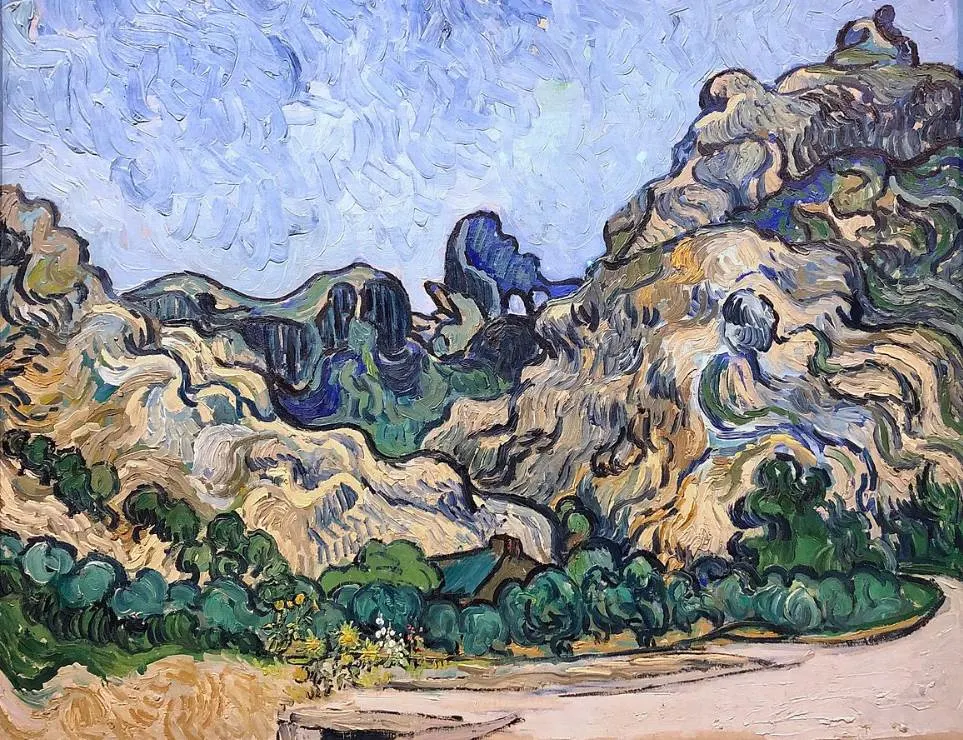
3. Man With Crossed Arms – Paul Cézanne
- Date created: 1899
- Dimensions: 92 x 72.7 centimeters (36.2 x 28.6 inches)
Man With Crossed Arms is a painting by Paul Cézanne (1839-1906) that explains why he was so influential for modern artists during the late 19th and early 20th centuries. His paintings featuring short, distinctive brushstrokes, are considered to be precursors of Cubism.
This was a painting produced during the final phase of Cézanne’s life, a period in which he avoided social contact and explored deeper subjects while living in Southern France. The sculptural composition of the man in this portrait highlights the artist’s interest in the exploration of space and depth.
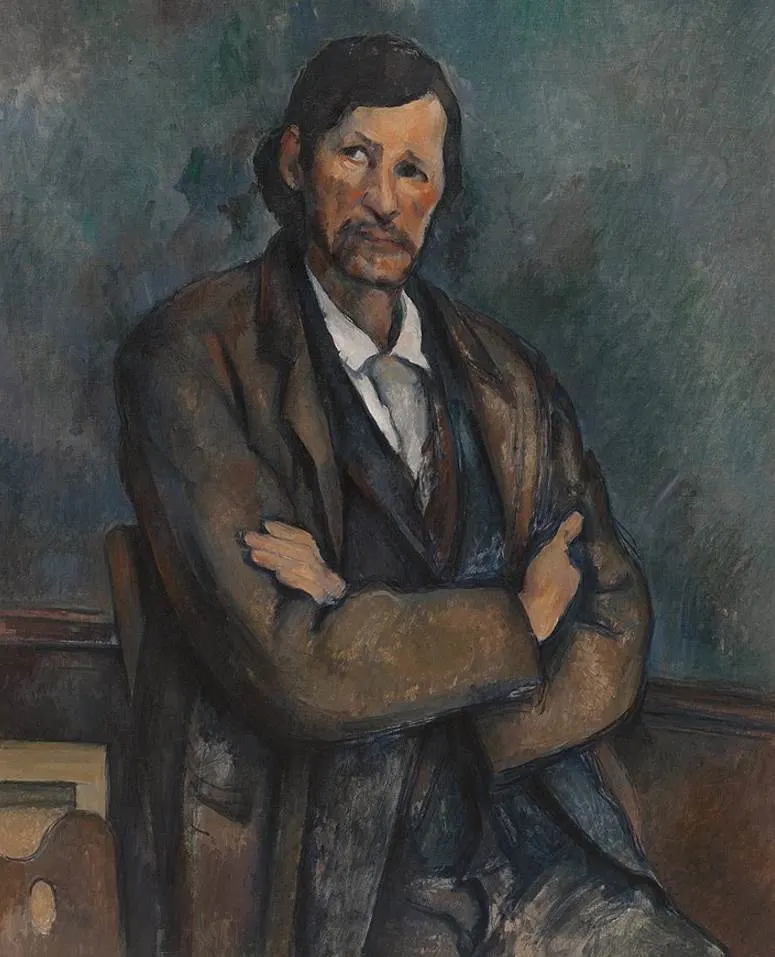
4. The Football Players – Henri Rousseau
- Date created: 1908
- Dimensions: 100.5 x 80.3 centimeters (39.5 x 31.6 inches)
The Football Players is a painting by Henri Rousseau (1844-1910), the man who spent the majority of his life working as a customs officer and tax collector. The French artist only started painting seriously when he was in his forties and was completely self-taught.
Le Douanier, as he as mockingly referred to, unwittingly became an iconic painter for Avant-Garde artists. They admired his paintings that have a cartoonish element to them so much that the old late bloomer became one of the young aspiring artists who made it big during their lifetimes such as Pablo Picasso and Henri Matisse.
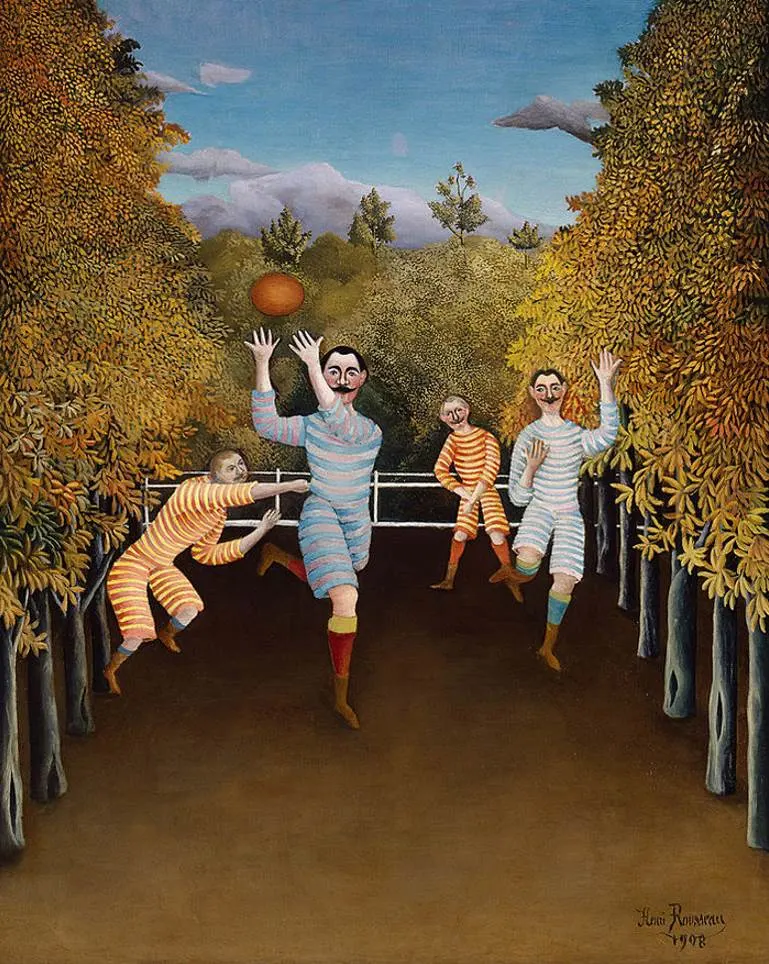
5. Landscape near Antwerp – Georges Braque
- Date created: 1906
- Dimensions: 60 x 81 centimeters (23.62 x 31.87 inches)
Landscape near Antwerp is a painting by French artist Georges Braque, a man who first exhibited 7 paintings at the Salon des Indépendants in Paris in 1906 and destroyed all of them shortly after. He couldn’t deal with the fact that other artists were so much more advanced compared to him.
Le Bonheur de Vivre by Henri Matisse was also on display during this event so that partially explains it. Braue left for a trip to Antwerp with his colleague Emile-Othon Friesz who had spent the previous year working in the large port city. Braque produced this amazing Fauvism painting with bright colors during this trip.
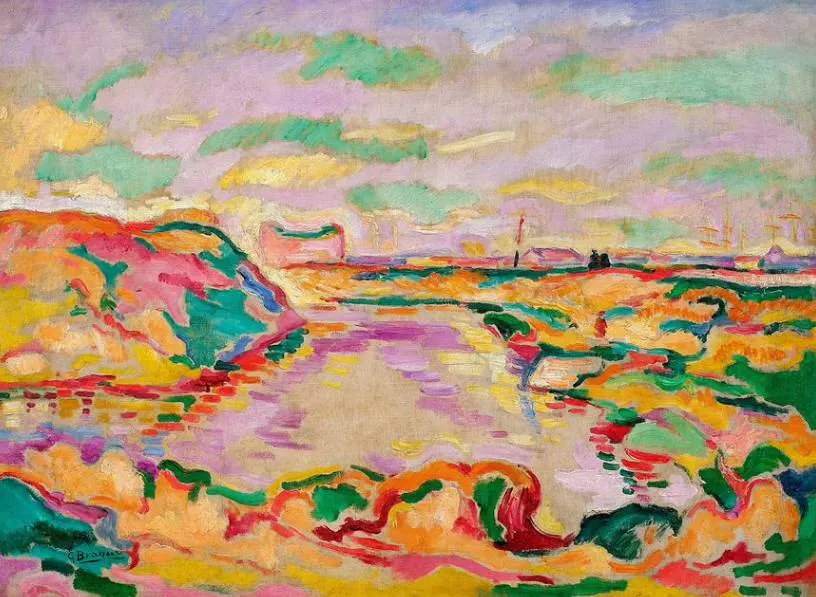
6. The Yellow Cow – Franz Marc
- Date created: 1911
- Dimensions: 140.5 x 189.2 centimeters (55.3 x 74.4 inches)
The Yellow Cow is a remarkable painting by German painter Franz Marc (1880-1916), one of the leading Expressionist artists in his country before World War I. He became famous for his paintings featuring animals in vivid unrealistic colors and this work is a great example of this style.
It’s a very large painting by Marc and is considered to be one of the most important Expressionist paintings of Marc’s early formative years. It was completed the same year as his famous Blue Horse I, one of the symbols of the “Der Blaue Reiter” artistic journal that he co-founded.
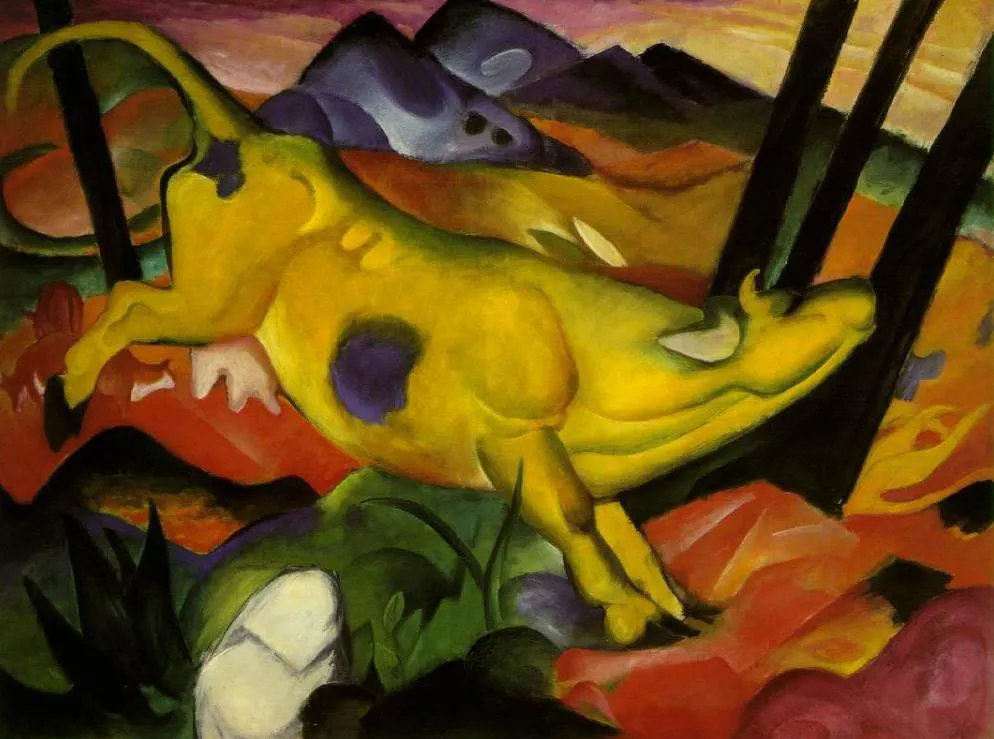
7. Woman with a Fan – Jean Metzinger
- Date created: 1912
- Dimensions: 90.7 × 64.2 centimeters (35.75 × 25.25 inches)
Woman with a Fan or “Femme à l’Éventail” is a painting by Cubist artist and art theorist Jean Metzinger (1883-1956), one of the founding fathers of the Cubist art movement. The painting was displayed at the 1912 Salon d’Automne in Pars and caused a controversy.
Cubist paintings were developed by disassembling elements of the composition and restructuring them. The National Assembly ho funded the exhibition didn’t like this and a discussion emerged as to whether or not they should continue to support “such barbaric art.”
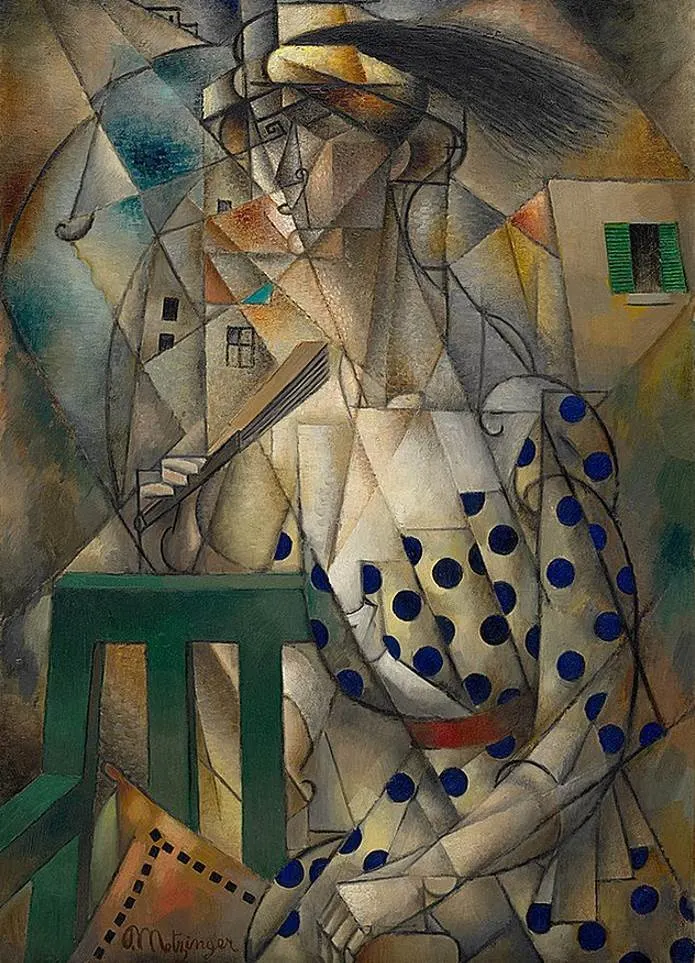
8. Paris Through the Window – Marc Chagall
- Date created: 1913
- Dimensions: 136 x 141.9 centimeters (53.56 x 55.87 inches)
Paris Through the Window is a painting by the Russian-born artist Marc Chagall (1887-1985), a man who moved from his native country to France in 1910. Many of his most famous paintings are reflections of cultural memories and a sense of nostalgia for his native land.
This painting was produced shortly before the outbreak of World War I and shortly after he had moved from Belarus to France. It’s a cityscape that features the Eiffel Tower and was completed in the distinctive colorful style that defines this phase of his career.
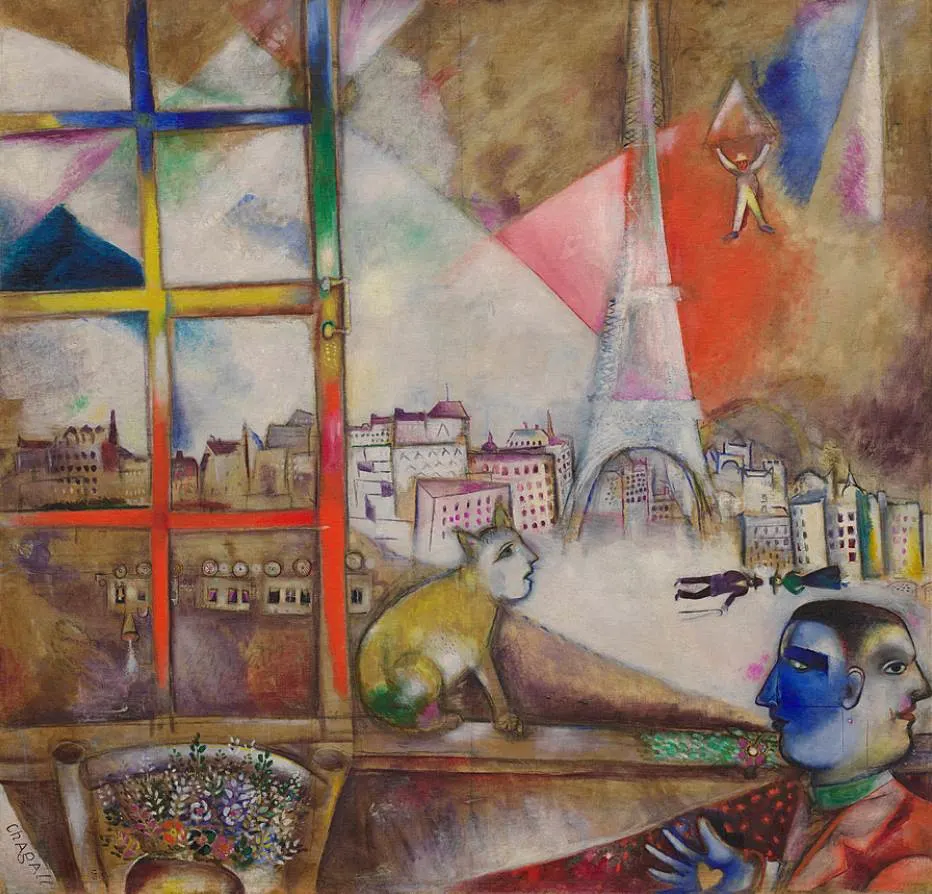
9. Brooklyn Bridge – Albert Gleizes
- Date created: 1915
- Dimensions: 102 x 102 centimeters (40.12 x 40.12 inches)
Brooklyn Bridge is a painting by Albert Gleizes (1881-1953), a French artist and theorist who co-founded the Cubist art movement by writing the movement’s manifesto titled “Du Cubisme” in 1912. Gleizes produced 3 different paintings of Brooklyn Bridge, one of the most famous bridges in New York City.
All 3 paintings are defined by their highly abstract qualities in which the bridge itself is hardly recognizable. The painting traveled to New York City just a year after it was completed and was exhibited at the Montross Gallery in the city in 1916.
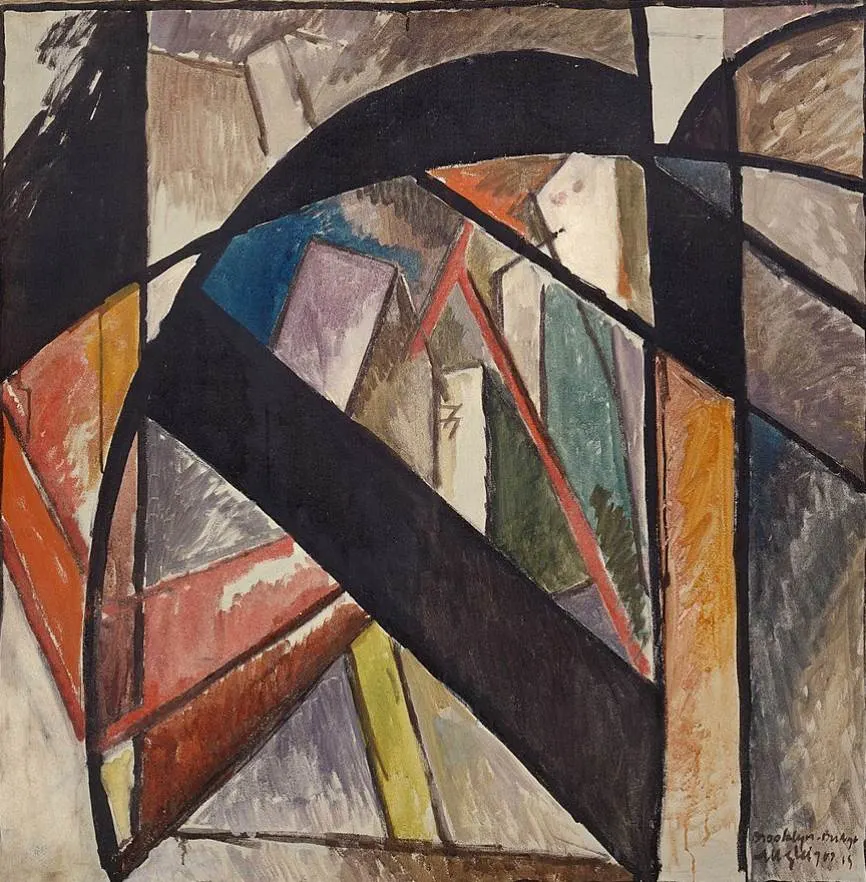
10. The Empire of Light – René Magritte
- Date created: 1953-1954
- Dimensions: 195.4 x 131.2 centimeters (76.93 x 51.62 inches)
The Empire of Light is the title of 27 different paintings by René Magritte (1898-1967) that depict a paradoxical image related to light. 17 of these are oil paintings and 10 are watercolors and they can be found in museums all around the world, including the Guggenheim.
The Belgian artist had completed several versions by 1953 but only became thoroughly interested when one of these paintings became a great success during an exhibition in 1954. All of them depict an illuminated nocturnal landscape beneath a sunny and partially clouded sky.
